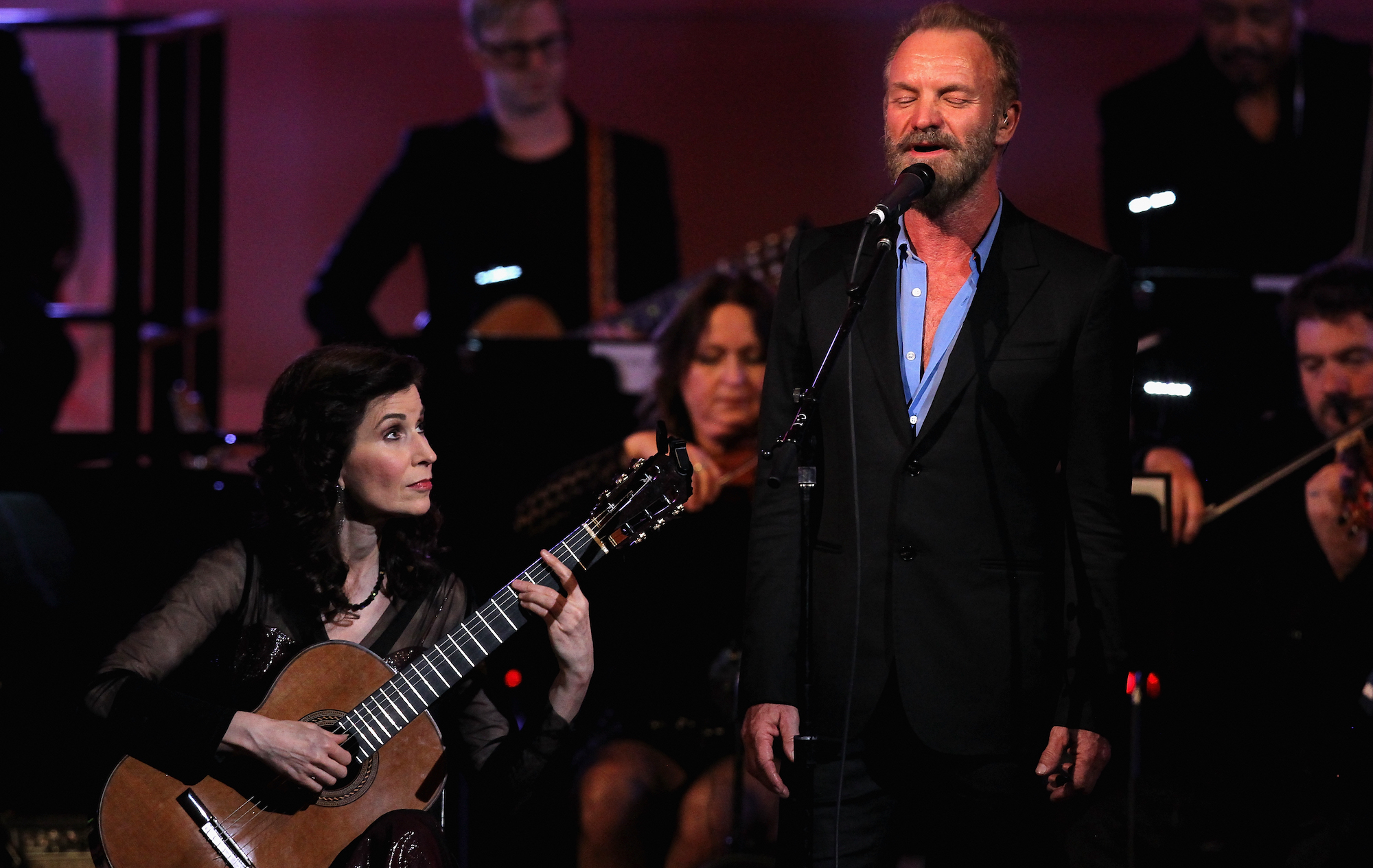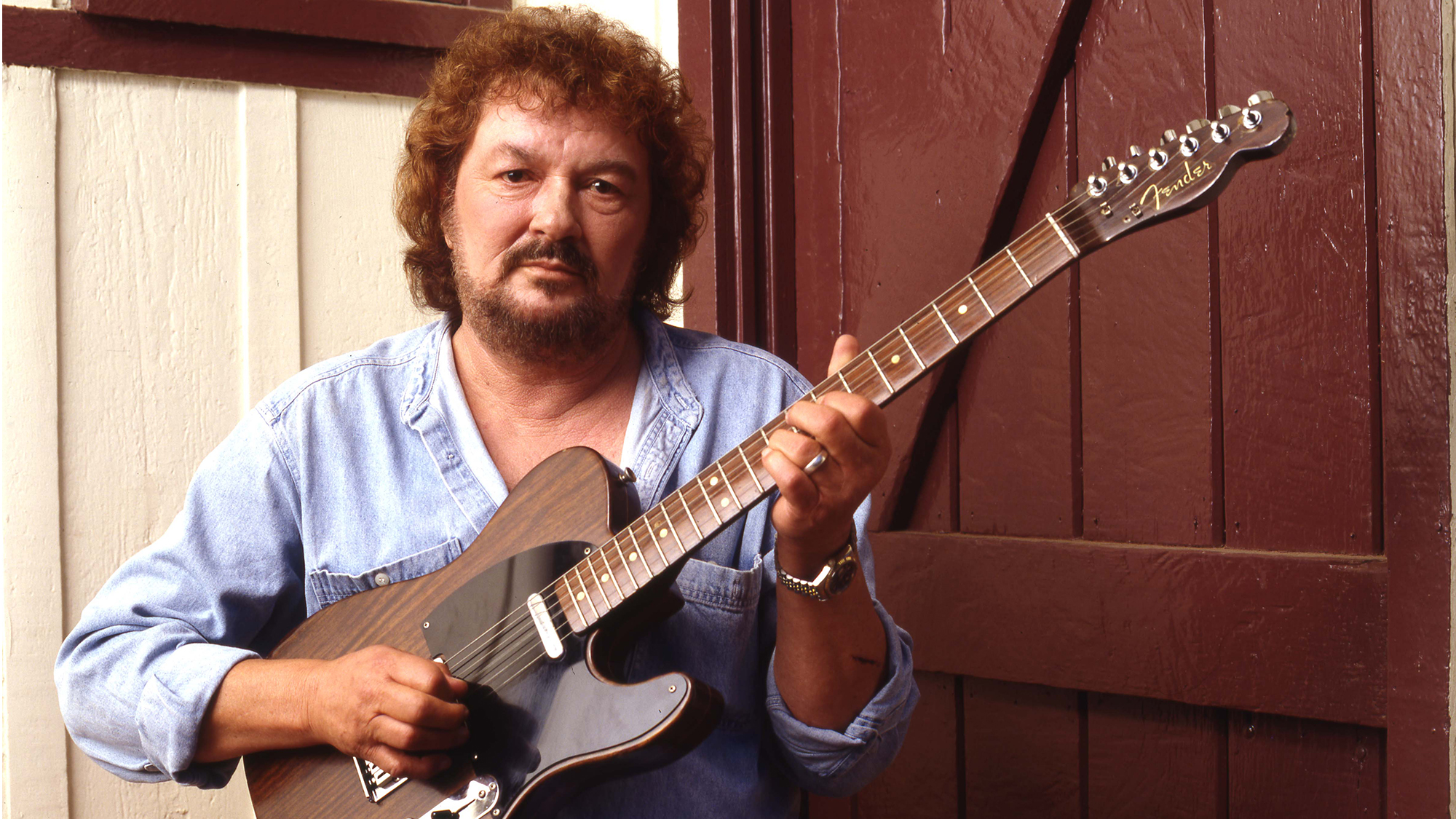Sharon Isbin: "The ability to improvise is something that is a part of all of us, but when it’s developed to the fullest in artists like Steve Morse or Steve Vai, who can just create music on the spot, it’s truly something to marvel at"
In this vintage GP interview, the classical guitar maestro reveals how she took improv inspiration from Heart's Nancy Wilson – and how players can improve their dynamics – and discusses the benefits of practicing guitar pieces... without the guitar

The following interview with Sharon Isbin was originally published in Guitar Player in 2011.
Sharon Isbin isn’t your average internationally renowned, multiple Grammy Award-winning, Billboard chart-topping classical guitarist. In addition to making dozens of recordings of music from the traditional and modern classical guitar repertoires – including nine compositions written specifically for her – and giving hundreds of performances with leading orchestras and ensembles in celebrated venues worldwide, she has also passionately embraced music of other traditions.
For example, 1999’s Dreams of a World explored several varieties of folk music from around the globe, and 2009’s Journey to the New World bridged British Isles and American folk. Both albums received Grammys.
On her latest release, Sharon Isbin & Friends: Guitar Passions, the maestro pairs with electric guitarists Stanley Jordan, Steve Vai, Steve Morse, and Nancy Wilson, in addition to Brazilian jazz guitarist Romero Lubambo, percussionist Gaudencio Thiago de Mello, soprano saxophonist Paul Winter, and vocalist Rosa Passos.
“Guitar Passions is a guitar tribute album with a Latin theme,” says Isbin. “It crosses the boundaries of people who are very present in the musical world today, and people who have figured in my life in the past in important ways, such as Joaquin Rodrigo, who put the guitar on the map in 1939 with his Concierto de Aranjuez, and the late Laurindo Almeida, who brought bossa nova to the West and arranged Adagio from the Rodrigo work – a revised version of which appears on the album. The uniting force is that we’re all passionate about the guitar!”
Briefly describe the roles of the other guitarists on Guitar Passions.
“Steve Morse improvised the solo on the bossa nova section of Adagio, a part originally played by Larry Coryell when he, Laurindo Almeida, and I toured as Guitarjam back in the ’80s. Steve and I go back a long way, and I absolutely love the way he improvised his very hot rock-styled part to the Adagio theme.
“Steve Vai and I had played together several times, and he actually composed a major 20-minute work called the Blossom Suite that we performed together in Paris and hope to record. We were at his house one day when I started playing this Allegro by [Agustín] Barrios and he started improvising to it, and I said, 'Why don’t we do this on the album?' He’s such an amazingly lyrical player – so inventive.
“Stanley Jordan created an extraordinary new part for an expanded arrangement of [Quique] Sinesi’s Sonidos de aquel dia, which blends beautifully with the classical guitar part I’m playing. For Dreamboat Annie, Nancy Wilson and I arranged and recorded the entire song, including the tongue-in-cheek bossa nova section at the end, in an afternoon. I grew up listening to Heart, and having the opportunity to meet and record with Nancy was a thrilling experience.
I think the ability to improvise is something that is a part of all of us, but when it’s developed to the fullest in artists like Steve Morse or Steve Vai, who can just create music on the spot, it’s truly something to marvel at
“Finally, Romero Lubambo played beautifully on Adagio and Carlos Barbosa-Lima’s arrangement of [Antônio Carlos] Jobim’s Chovendo na Roseira.”
You mentioned that Morse and Vai improvised their parts. Improvisation played a prominent role in early classical music, didn’t it?
“Absolutely. For example, Bach was the pop artist of the time in the early 1700s, and improvisation was very much a part of being a performer and composer in the pop world. I think the ability to improvise is something that is a part of all of us, but when it’s developed to the fullest in artists like Steve Morse or Steve Vai, who can just create music on the spot, it’s truly something to marvel at. And I really like working with that kind of fresh energy because it inspires me.
“I’ve been spending time with Carlos Santana lately, doing some exploration for a project that we might do together, and that’s actually forcing me to learn how to improvise. So that’s my new project: learning how to improvise!”

That raises the question of why many classical musicians are uncomfortable improvising.
“I think that the fear factor probably interferes more than anything. For example, when I was in the studio with Nancy Wilson, she simply made me improvise, and I really liked the results. It becomes a lot freer rhythmically. You take your mind off the page and you just explore what comes to you, and that is a very freeing idea.
Similarly, working with Carlos was like getting a seven-hour guitar lesson. He was so patient and just stuck with it. I have a long way to go, but once I began to feel some sense of security, the freedom became enjoyable rather than terrifying.”
What guitars did you play on the new album?
“I played two instruments on Guitar Passions – one by Michael O’Leary and one by Antonius Mueller. They both have cedar tops, but are otherwise very different. O’Leary’s approach is to increase the volume and the resonance by focusing on the soundboard. The back and sides are doubled make them more stable, and the soundboard does all the vibrating.
“Tony Mueller’s guitar has a double cedar top with a sandwich material glued in between for stability. Both tops are very thin, and that thinness creates a very fast response, so that the string is almost playing before you touch it! The guitar has amazing warmth, and the high-E string has an extraordinary, bell-like sound.
“I love both guitars, and I thought they would work well together on different selections. The only piece I played them both on was the Porro duet, and it really worked.”
How do you prefer to record your guitars?
“I like to have a resonant space, so I’m getting something back in terms of the studio itself. The setup usually involves four microphones – two placed close to the guitar to get the articulation and the presence, and two mounted on stands a little further away to get the ambiance of the room.”
How many distinctly different sounds can you get from a classical guitar just by changing the way you strike the strings?
“It’s really like an orchestra. If you play by the bridge using just your fingernail, and play perpendicular to the string, you can get a very bright metallic sound. The more you angle your nail when attacking the string, the warmer the sound, and when you add flesh it becomes even more sensuous and velvety in its color. Moving your hand down toward the fretboard makes the sound even warmer.
“When you add the left hand to the process, fingering in the first position, versus a higher position, produces a warmer sound. Add vibrato to that – say, finger an E on the third string at the 9th fret and multi-finger vibrato, where you put all your fingers down and really pull at that string with the left hand – and it creates an otherworldly kind of sound.
“Adding harmonics, crossing the strings behind each other to get a snare drum effect, playing staccato where you muscle the string, pulling the strings to get a snapping sound – all of these add even more colors.”
Electric guitarists' temptation is to be loud because they can be. But they might be surprised how they can also draw people to them by being as quiet as possible, so that they bring the listener into their world rather than the other way around
What are a few examples of altered tunings used within the classical guitar repertoire?
“One common altered tuning is to lower the low E to D, and sometimes also to lower the A to G. And in Renaissance music sometimes the G is lowered to F#. It can become much more complex than that depending on the composer, but those are the basic ones that I have used.”

You have an extraordinary command of dynamics. What advice can you give electric guitarists to better incorporate dynamics into their playing?
“Their temptation is to be loud because they can be. But they might be surprised how they can also draw people to them by being as quiet as possible, so that they bring the listener into their world rather than the other way around. That establishes a real intimacy that is equally exciting as the loud and bombastic. So, if you have both of those and everything in between, then you really have a palette of expression that is incomparable.
“Of course, I’ve always enjoyed the intimacy of the classical guitar, as playing it is a very tactile experience. You are touching the string, creating the vibration and the sound is born. In that process, I love to explore how softly I can play, how much I can turn each nuance into a caress, and then go to the other extreme of strumming away, which can be really loud and fierce.
“One exercise I like involves taking a simple scale such as C major, and playing each pitch multiple times with alternating fingers. I might start with the softest I can possibly play, gradually getting louder until I reach maximum intensity, and then backing down gradually again, as I move through the scale. That really gives you a sense of how to move in between these extremes.”
Speaking of exercises, in your book, Classical Guitar Answer Book, there’s a chapter called 'Relaxation' and 'Visualization for Performing'. What is the visualization part about?
“I like to play by memory when I perform onstage, and there are several aspects of memory that come together to make that possible. You’ve got the motor memory of your muscles, the aural memory of what you hear, and the visual memory of seeing the notes or the position on the frets where your fingers are going. All of these are important, but, basically, the last signal that makes the sound happen is the impulse in your mind to put your finger on a particular fret to get a particular pitch.
“I like to practice without the guitar and hear in my mind exactly what I want the music to sound like. That’s a freeing process, too, in that it gives you the chance to create an alternate vision of the music unencumbered by an instrument or technique. I visualize in my mind all the left-hand and right-hand fingerings and articulations at the same moment as I’m hearing the sound in my head, which unites the processes of the aural, visual, and visceral memories.
“Immersing yourself in the music gives you a sense of confidence because when you step onto the stage you will know exactly what to do.”
What are a few classical guitar exercises that steel-string acoustic or electric players would benefit from?
“The Brazilian composer Heitor Villa-Lobos wrote 12 etudes, or exercises, the first of which [Allegro Non Troppo – Arpejos] uses a finger pattern that is a little complicated, but it just repeats every measure, so once you learn one measure you have it. I take that finger pattern as a daily warmup, and it is something that would really free up an electric or steel-string acoustic player who wants to be able to use their fingers as well as a pick.
“To get really great articulation with my left hand I practice hammer-ons and pulloffs, including playing with the very tips of my fingers, which gives me even more power and control. I also do exercises to maintain finger independence.
“For example, if I’m playing hammer-ons and pull-offs up and down a string, when I’m pulling off I leave my other fingers on the adjacent string. So, if I’m playing on the sixth string, as I pull off, I keep my other fingers on the fifth string so that I’m only moving one finger at a time, with the others anchored, and that creates more finger independence for the left hand.”
How would you access the current state of classical music and where do you envision it going?
“I think we’re in a very exciting time in that composers really have free reign to explore what inspires them and there aren’t any restrictions as there were at one time, when you had to write 12-tone or atonal music. You can do those things if you like, or write tonal music, or be very avant-garde and experimental. And when composers have a link to their own heritage – whether it’s Chinese or African or British or Italian – they’ll bring something unique to the picture.
“There are no limits other than the limits composers impose upon themselves – and that bodes well for the future, because anything is possible and the results are entirely unpredictable.”
All the latest guitar news, interviews, lessons, reviews, deals and more, direct to your inbox!



